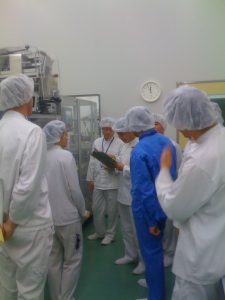Teamwork in a Lean Enterprise
Today we’re going to look at the importance of using teamwork to develop a lean enterprise. While it is easy to define what a Lean enterprise is when we talk about tools and systems, it is the intangibles like teamwork that supports the foundation of what we are trying to achieve when implementing a Lean Enterprise philosophy.
Any company, small or large, is a combination of many people in small groups working together. Each of these functions need to work collaboratively to ensure the outcomes of a large company are achieved. Teamwork is the important element we want to nurture through a Lean implementation to make sure the small groups work effectively, and then with the ongoing maintenance and incremental improvements of each area.
When implementing a Lean enterprise with the assistance of TXM, we offer many opportunities to develop teamwork into the new environment. From day one we are looking to have a cross functional team when we analyse the value streams of the company. As the future state for a company is developed it is important to include the teams in the production cells and support areas in these developments and evolving plans. The people working within your organisation are the ones who knows what happens on a day by day basis to get the product out of the door, so it’s important to understand their functions and include them in developing a future enterprise plans.
During the trial and implementation phase of these future states, it’s the team members that need to live with the outcomes. So these teams need to be included in the implementation and also the review and improvement of these processes that have been put into place. Clearly defining some of the roles within the team is also important to implement lean processes. The team needs to have a leader; someone who is happy conducting the morning stand-up meetings and also reporting to management status of the team. The leader needs to be backed up by second in charge to ensure continuity of processes if the team leader is ever away. While it is often easier to define roles within a team based on technical skill, the roles of the internal management of this team also needs to be clearly defined with expectations and measurable outcomes, all of which fit back into the bigger picture of the teams goals and of course across the organisation.
As humans we have the inner need to feel that we belong and participate in the community even within a workplace. In all levels of formal education teamwork is encouraged on project work and across many small activities, so why do we often not continue this approach to our working lives? It’s the people in your company, and the teamwork that results of people working together, that gives your company the competitive edge.
As a sporting nation we love having analogies in sporting terms, and the concept of teamwork is perfect in the sporting context – our production cell is the team out there on the football field getting the ball from the opposition and constantly keeping the ball heading towards the goals. The team is supported by the coach and the team’s support people. The support team is not out on the football field getting the ball; they are observing the game, offering support by supplying the drinks and providing feedback after the game, so that the training during the week for the upcoming game to be perfected.
Rolling out new practices across a company when implementing a Lean Enterprise requires a high level of focus on the team and the people, so make sure all the “people issues” are included in implementation plan and constantly monitored as the new system is rolled out. These are simply the first steps for supporting teamwork in your organisation and it will be an ongoing process.





